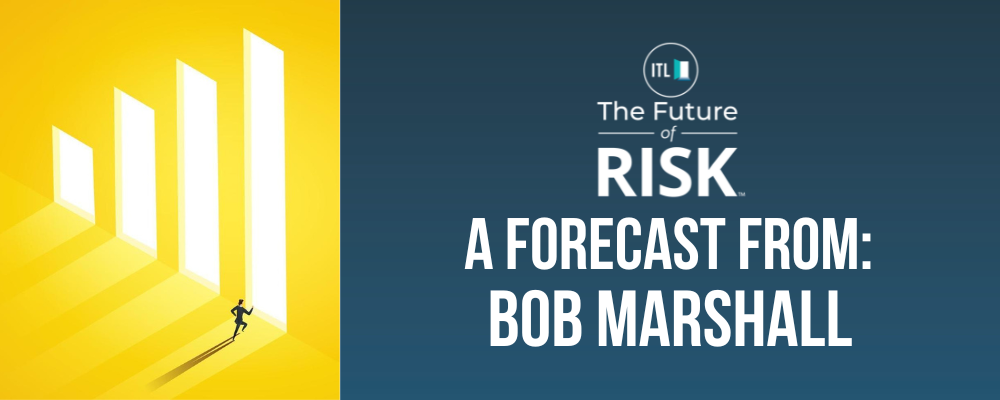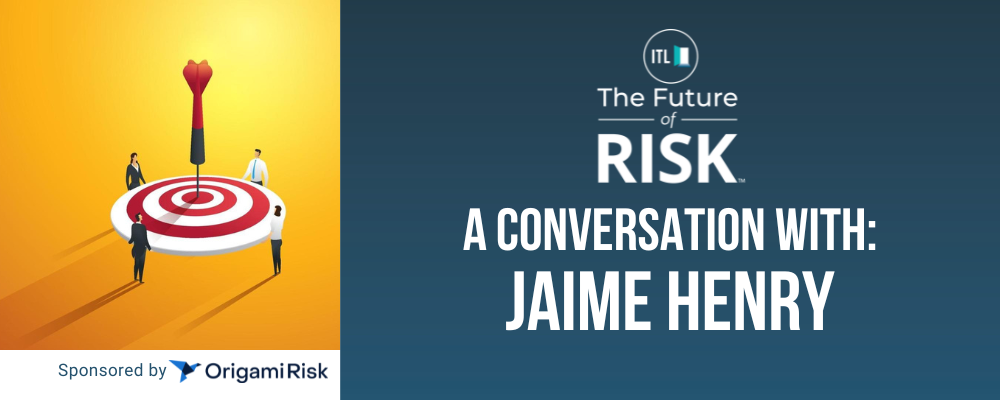 |
Robert Marshall is the founder and CEO of Whisker Labs. Whisker Labs, a spinout of Earth Networks, delivers next-generation home energy intelligence technology to realize the full potential of the connected home. In 1992, Marshall co-founded AWS Convergence Technologies, the company that would become Earth Networks, by pioneering the networking of weather sensors and cameras using the internet. By developing groundbreaking technology to find "signals" — valuable, meaningful intelligence — in big-data "noise," Marshall improves people's lives and protects their livelihoods. He has appeared on CNN, BBC World News and ABC Nightly News and has been quoted in major news outlets that include the New York Times, the Washington Post, Nature and Scientific American. |
Insurance Thought Leadership:
How is Whisker Labs technology making homes and communities safer?
Bob Marshall:
Whisker Labs' breakthrough technology, Ting, protects homes and communities from fires by detecting arcing, the precursor to most electrical fires. A single, plug-in sensor monitors an entire home and is proven to prevent four out of five electrical fires. To date, Ting protects nearly 450,000 homes and has saved over 6,500 families from electrical hazards that could have led to devastating fires. Outside the home, Ting is advancing how grid resilience is measured and monitored as it detects electrical faults along the utility grid, helping protect communities from catastrophes such as wildfires.
Insurance Thought Leadership:
Can you discuss some of the challenges associated with integrating IoT technology into insurance and risk management?
Bob Marshall:
Successful integration of an IoT program relies on overcoming several fundamental challenges to fuel program growth and a robust ROI:
- The program must be strategic and have executive buy-in. Support for the IoT technology must start at the top. From there, all stakeholders should see the technology as a strategic investment for their customers and for the long-term benefits it will provide. I should add that, while early forays into IoT largely fell flat, they still yielded lessons on what doesn’t work. In any case, these past projects should not serve as reasons for hesitation. It is a different time, and IoT is here to stay.
- The solution must be compelling. Homeowners must be inherently interested in the value proposition the IoT technology offers. In the case of Ting, for example, we find that people rightly have an innate fear of fires. The offer of electrical fire prevention naturally resonates throughout the homeowner community. This drives successful enrollment rates.
- There must be a robust, yet turnkey marketing program. To further fuel interest, marketing strategies must be implemented to spread awareness and make signing up easy. An IoT business partner should make it simple for insurers to unlock required marketing channels such as landing pages, email, direct mail and agents engaging with the program. Clear and consistent messaging across all touchpoints helps earn homeowner trust.
- The technology has to be super simple for customers. Once successful enrollment is established, ROI hinges on a high activation rate. The technology must be easy to understand, low (no) maintenance and highly compatible in all homes. Ting, for example, is a DIY install that takes just two minutes, which helps drive activation rates over 85%. It turns out our focus early on to wrap the complexity of the technology into such a simple customer experience was even more critical than we first thought – the results validate our approach.
- Operations and data integration must be seamless. Behind the scenes, data flows via API integrations must be in place to ensure IoT providers and insurers can seamlessly connect and communicate through all stages, from fulfillment to claims avoidance, and ensure a stellar customer experience at every step.
- Finally, ROI must be demonstrated. This first means that the technology has to do really well at its fundamental function. Equally important, IoT partners and insurers must be fully aligned on success metrics, and ultimately the program must demonstrate an ROI that supports long-term success. This, in turn, requires proven technology and a willingness on the part of the insurer to expand rapidly – and the ability of the IoT partner to support that scale – to demonstrate the true impact the technology can deliver.
Insurance Thought Leadership:
What are the pros and cons, from your perspective as an IoT service provider, of the new software standard Matter? Will it accelerate consumer adoption of devices like Ting?
Bob Marshall:
We welcome any industry-wide effort that has the homeowner’s best interests in mind. However, all signals point to a slow start for the standard. It needs more time, and it will be a while until other device classes are incorporated and adoption becomes mainstream. At that point, it could help accelerate the adoption of devices that the consumer otherwise would have avoided from the inconvenience or complexity of splitting command and control across more than one hub/interface/app. With Ting, however, fire avoidance is such a compelling value proposition – and there are no command-and-control dependencies – so we don’t anticipate Matter having a material impact on Ting's adoption.
Insurance Thought Leadership:
Whisker Labs has been able to use data to show utilities the power of analyzing an electrical grid for potential issues. It’s a good example of commercial risk management applications for your device. Can you describe how that use case is going?
Bob Marshall:
We're finding the use case is even more compelling than we first thought. Frankly, it is alarming that millions of homes and businesses are being supplied with dangerous levels of power from an aging, deteriorating and often-over-tasked electric system. This problem is only amplified by climate change and increases in electrical demand and grid complexity. The Ting sensor network is the largest network to ever measure and monitor the electrical grid, revealing first-of-its-kind data on its health and state of resilience. The beauty of that for all stakeholders is that the network is already deployed.
Ting empowers utility companies to think about prediction and prevention; in the same way, the insurance sector has adopted this model. Currently, Ting data is being used to detect and repair home fire risks that originate from faulty utility equipment. But the potential impact is much greater. Data from the Ting network can help to prevent catastrophic events like wildfires and grid meltdowns, as it detects faults along the entire grid and can help direct investment to the areas where it is needed most.
Insurance Thought Leadership:
Are there other risk management use cases for Ting that you see in the next five years?
Bob Marshall:
We are laser-focused on helping to protect customers by preventing fires in homes and throughout communities. Ting technology does, however, present several opportunities beyond fire prevention. For example, Ting is already capable of temperature-sensing, which has resulted in cases of frozen pipe avoidance. Similarly, Ting prevents water losses as it detects electrical hazards with sump pumps, water heaters and other devices and appliances that can lead to leaks.
In the future, Ting will have the capability to predict problematic equipment failures with HVAC systems and other key appliances. The technology can also be expanded beyond the home to commercial applications for insurance partners. Ting’s ability to monitor and spot power quality problems holds great promise for commercial equipment resiliency. Perhaps most compelling is the opportunity to grow and integrate the data sets Ting is collecting with existing insurance risk models to help sharpen and expand how our partners think about and evaluate power and fire risk.
Insurance Thought Leadership:
Insurers need data to evaluate what reductions in premiums could be offered to those with smart home devices. Has that been a challenge to generate, or is there an easy case to make for Ting?
Bob Marshall:
Our model with Ting is to provide the technology to homeowners for free. Economic ROI for our insurance partners is clear, and marketing benefits are off the charts, with a constant stream of incredible testimonials from customers who are grateful that the insurance partner, via Ting, has helped to protect their home and family. The benefit of risk reduction thrills customers today even without lowering premiums. It is still a little early for insurers to inform reductions, but with Ting at scale, they will be able to offer more tailored premiums that will likely result in a reduction due to Ting protecting the home and to substantially lowered claim costs.








